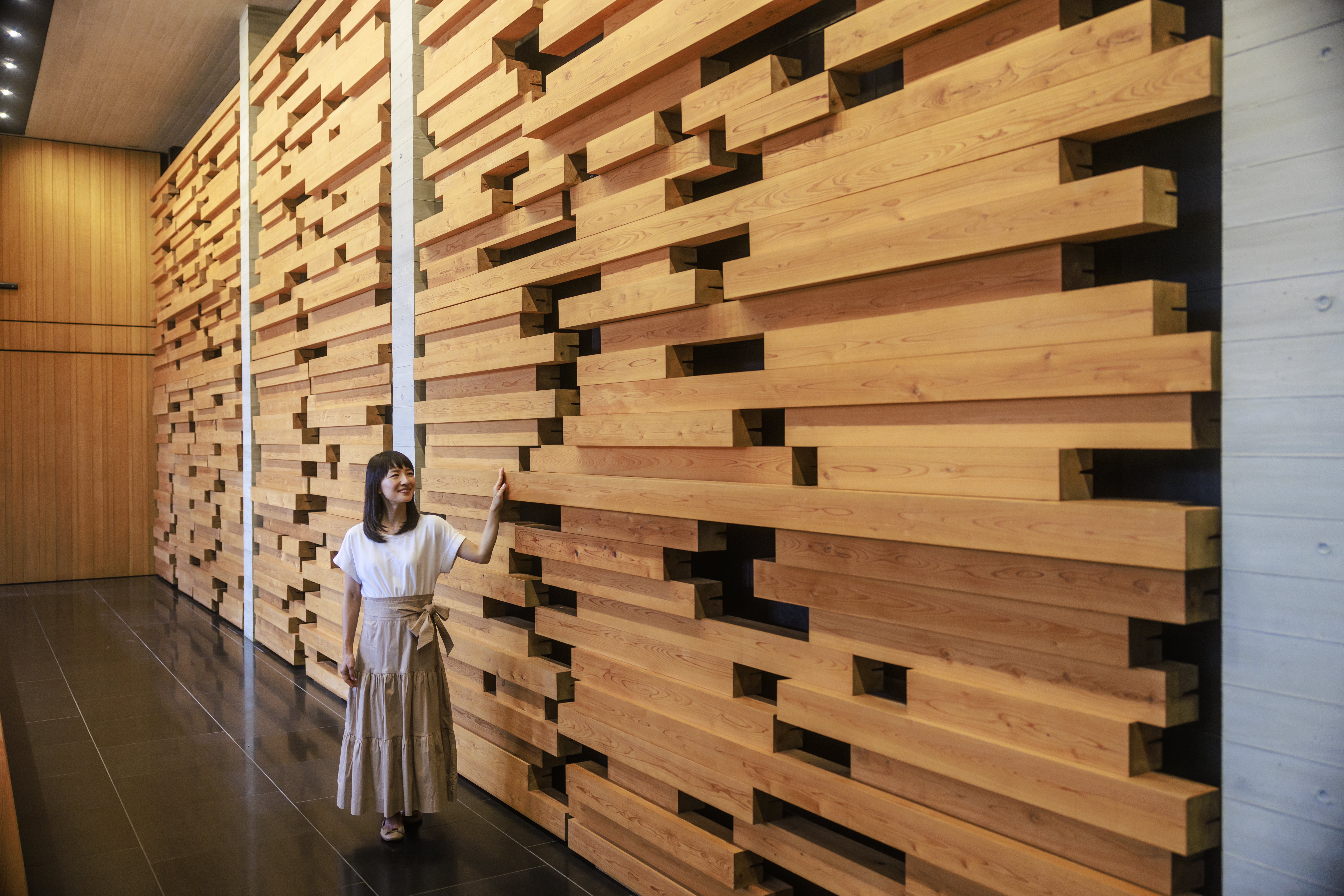Wood is a resource packed with potential as we transition to more sustainable and eco-friendly lifestyles. One building demonstrates how we can revive traditional craftsmanship and use wood to build safe, comfortable, and sustainable architecture.
A Breath of Fresh Air in a Concrete Metropolis
Much of Tokyo is an urban jungle of concrete, asphalt and metal. Wood-based architecture can bring in a breath of fresh air to this kind of monochromatic metropolis. One structure that stood out for me was the wood-based Mokuzai Kaikan (“Wood Center”) office in the Shin-Kiba district. The facade and interior are a dynamic mix of the old and the new, incorporating age-old woodwork techniques with modern technology.
Built with a combination of top-grade hinoki (Japanese cypress) and concrete, this architectural masterpiece showcases the appeal of wood for modern spaces. Although it is an office building, I could sense elements of wabi-sabi and classical aesthetics. I was told that many aspects of the design were inspired by ancient Japanese architecture—the enormous hinoki terrace is a reinterpretation of the engawa veranda, allowing ventilation and keeping the indoor environment cool and comfortable. Many of the rooms are not divided by walls. Instead, the spaces seem to flow into each other. I was particularly impressed by the soothing, earthy fragrance of hinoki that wafted through the air. The building was erected over a decade ago, so it’s impressive how the aroma still lingers on.
Reviving Wood with Computerized Craftsmanship
I had a chance to speak with the architect, who took on the mission of overturning conventional beliefs about wooden architecture. He explained that wood is often overlooked as a building material because of fire safety issues, but this was overcome by using design techniques such as providing adequate ceiling height.
What particularly impressed me was how the wood was processed. Traditionally, careful craftsmanship was needed to process wood, but for this building, a computerized cutting machine was used.
The architect revived and adapted traditional Japanese woodwork techniques to join the components, ensuring that there is minimum damage to each piece. This way, they can be easily taken apart and re-used for other purposes such as building furniture. In some spaces, wood scraps were used as design elements. I think this serves as a great example of how we can design safe and sustainable buildings for the future.
Building for the Future
As we transition to more sustainable ways of living, using wood wisely is key. As a building material, it is organic and renewable, since it can be grown through natural processes. It uses much less energy compared to other construction materials such as concrete and steel. In fact,
I was told that wood can help reduce our carbon footprint as a society because wooden buildings lock in a portion of CO2 in the atmosphere within its structure.
Buildings like this serve as tribute to classical Japanese sensibilities and provide a great example of how we can move towards an eco-friendly future. The architect tells me that the possibilities for wood are endless—wood-based nano-materials can be used to replace plastic and even as textiles.
Wood grown in Japan is a great option for those looking to incorporate this versatile resource into their daily lives. Cedar, cypress, and other trees are grown and harvested in a planned manner, ensuring their quality. I learned that they are relatively affordable and easily available—ideal to use for a variety of purposes.
Working and living in a place that uses natural material like wood can make us feel closer to nature. I personally try to choose furniture, cookware, storage containers, toys, and other personal items made of wood and other natural materials. I think each object has a personality of its own and since wood is so long-lasting, it can continue to spark joy for years to come.








